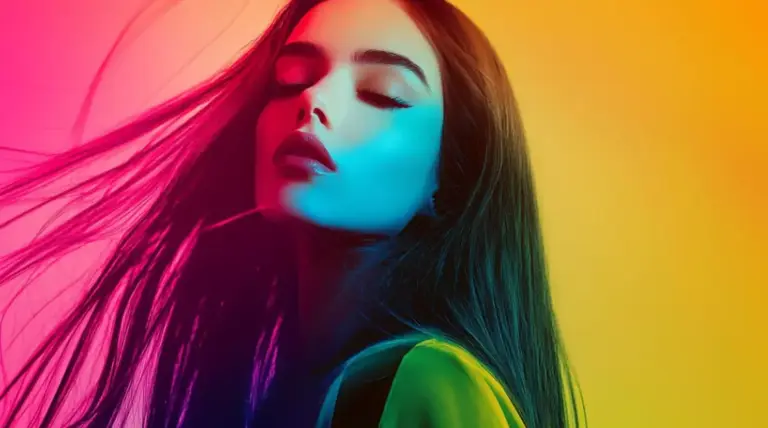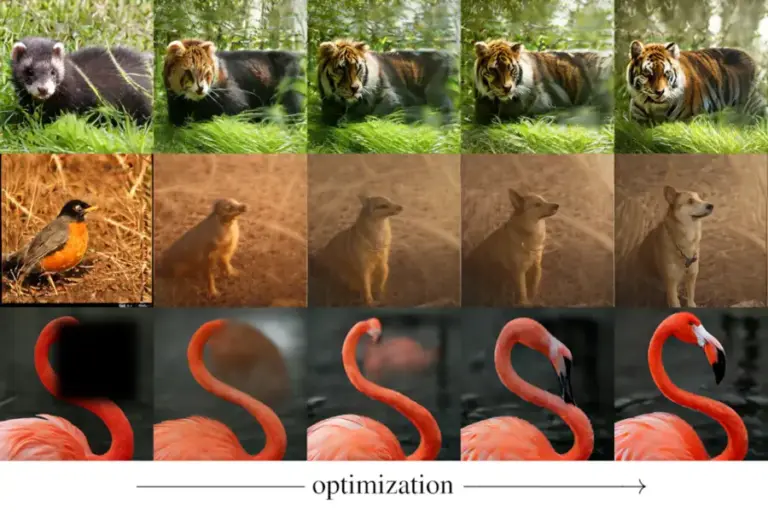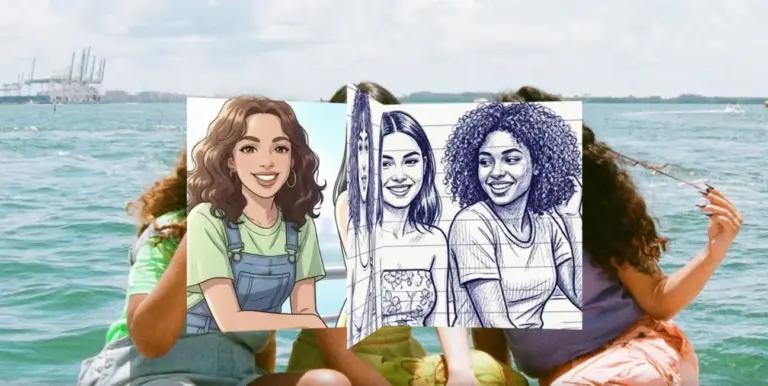
🎯 Key Takeaways
- The AI influencer market is growing rapidly, blurring the lines of reality and posing a new challenge for traditional photographers.
- AI influencers are becoming a new force in the marketing world by compensating for the shortcomings of human influencers—they can operate 24/7, have no risk of unpredictable behavior, and can create flawless visuals.
- The emergence of AI influencers, however, paradoxically highlights the unique human values of ‘authenticity’ and ‘sincerity,’ offering real photographers new creative opportunities.
- We examine the growth potential of the Korean market through the success of the virtual influencer ‘Rozy’ and propose new collaborative models that leverage AI technology.
Prologue: The Paradox of an Era Where Reality and the Virtual Collide
Recently, an online community was shaken by the revelation that a popular account, which had amassed millions of ‘likes’ while posing as a famous photographer, was actually filled with images 100% generated by AI. The photos—with their perfect composition, lighting, and breathtakingly beautiful models—captivated countless people. Even other professional photographers expressed admiration and asked for ‘tips.’ This incident raises a crucial question: if the creator of the beautiful images we see is no longer human, and if that creator is imitating and seeking to replace human labor and creativity, how should we react?
The author of a Digital Camera World article confesses to feeling a strange mix of emotions when observing the rise of AI influencers. They, too, found themselves easily fooled by AI-generated images and expressed bewilderment at a technology that has surpassed the ‘Uncanny Valley.’ At the same time, they present a positive outlook, suggesting that this change could open up new opportunities for real photographers. In an age where AI can create perfect images, the value of ‘authenticity’ and ‘experience’ that only humans can capture will become even more important.
The Rapid Growth of AI Influencers Is Reshaping the Market
AI influencers are no longer confined to the realm of novel tech experiments. They have evolved into a massive industry, commanding huge followings and generating substantial revenue. For example, ‘Aitana Lopez,’ an AI influencer created by the Barcelona-based design agency ‘The Clueless,’ has amassed hundreds of thousands of followers on Instagram and is reported to earn more than €10,000 (approximately $10,800 USD) per month.
The rise of AI influencers is not just a technological advancement; it signals a fundamental shift in the influencer marketing ecosystem. They are receiving a flood of offers from brands by leveraging unique advantages that human influencers cannot match.
The Strengths of AI Influencers: Why Are Companies Choosing Them?
- Easier Risk Management: Human influencers can cause significant damage to a brand’s image through privacy controversies, health issues, or unpredictable behavior. AI influencers, being fully controllable, carry virtually zero risk.
- 24/7 Availability: They can produce content, interact with fans, and embark on virtual travels worldwide without needing breaks or being affected by time zones. This is a significant advantage in a digital marketing environment where real-time engagement is crucial.
- Customizable Visuals: The appearance, fashion, and backdrop of an AI influencer can be freely altered to match the intended concept. They can be designed to perfectly align with a brand’s target demographic, making products stand out in the best possible way.
According to MarketsandMarkets, a global influencer marketing platform, the worldwide virtual human influencer market is projected to grow to $10.5 billion (approximately ₩14 trillion) by 2025, surpassing the size of the human influencer market. This suggests that these virtual entities are moving beyond a niche market to become a central force in the mainstream.
South Korea’s Virtual Humans: The Success Stories of ‘Rozy’ and ‘Lucy’
South Korea is also a hotbed of activity in the AI influencer market. ‘Rozy,’ a virtual human developed by Sidus Studio X, is a prime example of a successful virtual influencer in the country. Launched in 2020 with the setting of being “forever 22,” Rozy has already become a top influencer, serving as an advertising model for numerous brands and earning billions of won annually.
Rozy’s success is a result of combining 3D asset modeling with cutting-edge AI technology. Her appearance is meticulously crafted, down to fine details like peach fuzz and eye veins, and her natural movements and expressions minimize the ‘Uncanny Valley’ effect.
Furthermore, Lotte Home Shopping’s ‘Lucy’ is another leading AI influencer. Lucy has expanded her activities beyond being just an image or video model, becoming a live-streaming show host who can communicate in real-time. This demonstrates the advanced state of AI technology and the entertainment industry in Korea, suggesting that AI influencers will move beyond simple image consumption into practical commerce.
The Shadow Over Photographers, and the Paradoxical Opportunity
The rise of AI influencers poses more than just a ‘threat’ to photographers. In an era where AI can generate a perfect portrait from just a few prompts, physical studios, expensive equipment, and the model scouting process are becoming unnecessary. This is causing significant disruption, especially in the commercial photography market. Brands with smaller budgets no longer need to bear the high costs of labor and shooting, as they can easily obtain desired images using AI.
However, within this crisis lies a paradoxical opportunity. The unique domain of human photographers, which AI cannot replicate, is becoming even more pronounced.
1. The Rising Value of Authenticity
As a flood of perfect AI-generated images saturates the market, people are drawn more to ‘real’ moments that aren’t artificial. The beauty in imperfection—an unexpected expression, a slightly tilted frame, or a faded texture—can only be captured in human life, and it is gaining rarity. Photographers will no longer be mere technicians creating ‘perfect’ images, but storytellers who capture ‘sincere’ narratives. Fields that document real human experiences, such as documentary, lifestyle, and candid photography, will receive more attention.
2. Creative Collaboration with AI
Photographers can use AI not as a competitor, but as a new ‘tool.’ For instance, they can use AI models like Midjourney or Stable Diffusion to easily composite complex backgrounds, change a model’s outfit, or maximize work efficiency.
Furthermore, a photographer’s role is crucial in defining the ‘persona’ of an AI-generated virtual influencer. Creating a background and story that matches the character of an AI model still requires human creative sensibilities. Breathing a sense of reality into the virtual world of AI influencers—this is the new value that future photographers must create.
3. New Expertise in ‘Technical Prompt Engineering’
To use AI effectively, one needs more than just basic operational skills; it requires the sophisticated skill of ‘prompt engineering.’ The process of combining specific words and parameters to achieve a desired image—and understanding the characteristics of the AI model to get the best result—demands the experience and knowledge of a seasoned human. Photographers can establish a new professional identity by combining their existing photographic skills with technical expertise in using AI.
FAQ: Common Questions About the Future of AI Influencers and Photographers
Q1. Will AI influencers completely replace human influencers and photographers?
A. In the long run, it is unlikely they will replace all roles. While AI strives for ‘perfection,’ the value of ‘authenticity,’ ‘experience,’ and ‘genuine interaction’ that only humans possess is a realm AI cannot easily imitate. AI’s utility will increase in certain commercial sectors where low cost and high efficiency are important, but humans will remain central to content areas that share personal experiences and emotions. Photographers, too, will see their role as an artist who captures authenticity become more prominent.
Q2. Are there no copyright issues with AI-generated images?
A. The copyright of AI-generated images is a widely debated issue globally. Since AI models use a vast amount of existing copyrighted works during their learning process, there is a potential for copyright infringement. However, the U.S. Copyright Office (USCO) does not recognize copyright for images solely generated by AI and only grants it in a limited capacity when there is a creative contribution from a human (e.g., prompt writing, image editing). South Korean copyright law is also moving in a similar direction, and the legal standards in this field will continue to evolve.
Q3. Where should photographers who want to learn AI technology start?
A. The best way to learn AI image generation is to use it yourself. Installing programs like Midjourney or Stable Diffusion and experimenting with various prompts is crucial to understanding how image generation works. Additionally, it is helpful to reference tutorials on YouTube or online communities and analyze how other artists are using AI to build your own expertise.
Conclusion: Discovering a New Human Role Amidst the Crisis
The rise of AI influencers is undoubtedly forcing a massive change upon creative professions, including photographers. However, this is more than just a threat to jobs; it could be a crucial turning point that redefines the meaning of ‘creation’ and ‘art’ that we have long taken for granted.
Now, photographers must not remain mere technicians who take perfect pictures. They must evolve into artists and strategists who use the new tool of AI to turn their unique visions into reality. The value of genuine human moments, filled with experience and emotion, will shine even brighter in contrast to the flawless virtual worlds created by AI. In the digital age, photographers will move beyond competing with AI and become pioneers of a new era, using AI to expand the boundaries of unique human creativity.


